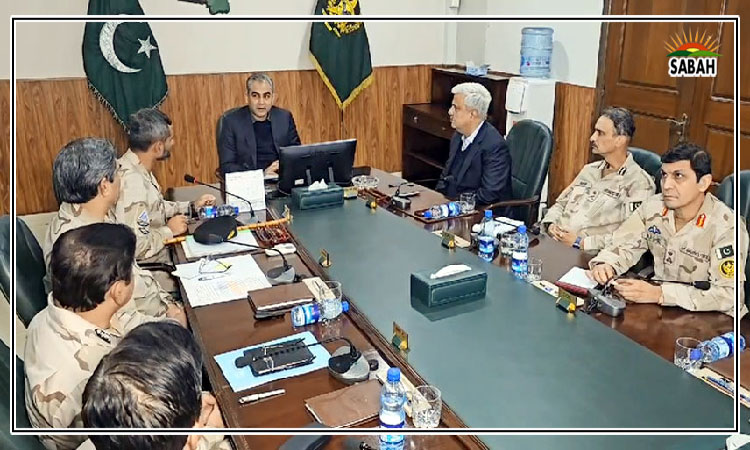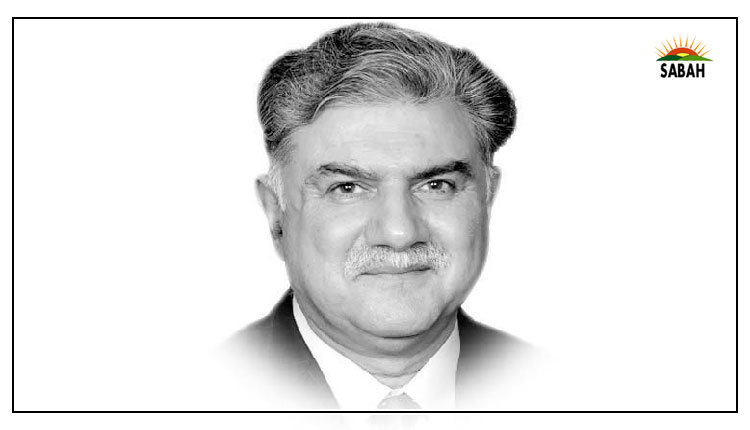The world in corridors…Hassan Baig
Since the start of the Belt and Road Initiative (BRI) by Chinese President Xi Jinping, world politics has been moving around economic corridors.
The Western world led by the US (G7 countries) outlined a full-fledged plan of a Build Back Better World (B3W) project two years ago to compete with the BRI. But it could not take off yet.
The G20 meeting recently in India also flashed out another economic corridor connecting India, the Middle East and Europe. There is a race to compete China through these corridors parallel to the original concept of economic corridors by Chinese policymakers connecting the world through roads, highways, expressways and rail-road networks. The political ramifications of these economic corridors affecting international relations are countless.
The wonderful concept of economic corridors originated in the BRI paradigm, connecting the world through six mega infrastructure development projects having an overarching design dominating world trade. The six economic corridors under the BRI are the China-Mongolia-Russia Economic Corridor (CMREC), New Eurasian Land Bridge (NELB), China-Central Asia-West Asia Economic Corridor (CCWAEC), China-Indochina Peninsula Economic Corridor (CICPEC), China-Pakistan Economic Corridor (CPEC) and Bangladesh-China-India-Myanmar Economic Corridor (BCIMEC).
These economic corridors can be termed as a new Great Economic Wall of China, as they envisage a whole new concept of connecting the world through physical infrastructure networks for the larger interest of promoting trade and commerce.
The Western world could not digest such a grand design orchestrated by Chinese policymakers, so they have come out in the open to challenge Chinese influence in the fields of trade and commerce. Before going through the challenges to the BRI as part of world politics, lets just visit the six economic corridors of the Great Economic Wall of China.
The China-Mongolia-Russia Economic Corridor was proposed by Chinese President Xi Jinping during the first trilateral meeting in Tajikistan in 2014 to expand development opportunities for all the three countries as part of regional integration enhancing collective competitiveness in the international market. This brought China and Russia closer than ever.
The New Eurasian Land Bridge, which was opened in the early 1990s and gained strength from the BRI, is greatly facilitating trade between Asia and Europe. It is an international carriageway linking the Pacific and Atlantic through a 10,800 km-long rail link passing through Kazakhstan, Russia, Belarus, Poland and Germany.
The China-Central Asia-Western Asia Economic Corridor links China and Western Asian Arabian Peninsula through Central Asia, facilitating economic and trade cooperation and bringing Iran, Saudi Arabia and Turkey closer to each other, benefitting all regional countries.
The China-Indochina Peninsula Economic Corridor is an important link connecting China, Singapore through Vietnam, Laos, Cambodia, Thailand, Myanmar and Malaysia, strengthening the China-ASEAN countries shared future.
The China-Pakistan Economic Corridor is a 3000 km-long corridor, a flagship project of the BRI, connecting western China to Pakistan by using the deep seaport of Gwadar in Pakistan ultimately benefitting almost three billion people of South Asia, Central Asia and North Africa.
The sixth economic corridor is the concept of Bangladesh-China-India-Myanmar Economic Corridor connecting South, Southeast and East Asia, enhancing regional connectivity to promote trade and commerce in these countries.
These Chinese economic corridors have attracted and attached a lot of attention and politics to counter such projects in the form of the Build Back Better World (B3W) and the India-Middle East-Europe Economic Corridor (IMEC). The project was re-branded as the Partnership for Global Infrastructure and Investment.
The B3W is an initiative of G7 countries to provide an alternative to the BRI for infrastructure development of low- and middle-income countries. It will provide necessary support to the $40 trillion plus need of infrastructure development to developing economies, connecting them to developed countries.
As if this was not enough to counterbalance Chinese influence in trade and commerce, the G20 countries spelled out another economic corridor (IMEC) in September, 2023 on the sidelines of the meeting in New Delhi to help promote and enhance economic cooperation and integration by connecting India to Europe through the Middle East.
The Biden Administration in a significant move to strategically compete with China initiated the B3W infrastructure development project in partnership with G7 countries by mobilizing private-sector capital. The project was re-branded as the Partnership for Global Infrastructure and Investment.
The B3W will be global in scope covering Latin America, Caribbean, and Africa to Indo-Pacific covering low- and middle-income countries. The US along with G7 partners will be utilizing the full potential of development financial tools like the Development Finance Corporation, USAID, and Transaction Advisory Fund to implement this project. The US is so concerned about Chinese influence globally in trade and commerce that it is trying to utilize multiple options to counter the BRI. But the IMEC so introduced is full of flaws.
The US is putting its best efforts to counterbalance China and strategically connecting India to the EU and other countries. The US and India are now new strategic partners.
That is the basic reason for this economic corridor but it has to align with CPEC/BRI in the long run owing to multiple reasons including but not limited to the difficult passage and terrain passing through land and seas.
The world is undergoing a huge transformation. Economic corridors will play a big role in determining the ultimate dominance of the first and second ranking economies of the world. The US and its allied democracies are once again going to play a big role in competing with Chinese supply chain, especially in the field of chips and semi-conductors being used in new found battery power.
The concept of the BRI has given birth to economic corridors, which is why the US has come out in a big way to propose and propagate the B3W, the Partnership of Global Infrastructure and Investment and now the IMEC to counter China.
The politics of economic corridors is in full swing. The new reality is that the global leader will be the one who will lead the AI-backed global supply chain through economic corridors.
Courtesy The News












